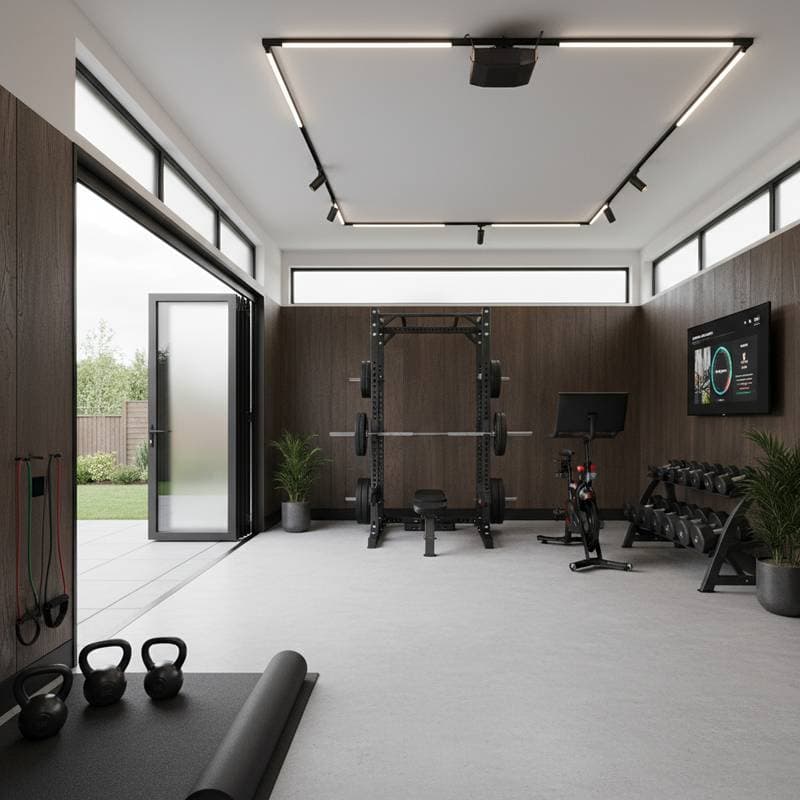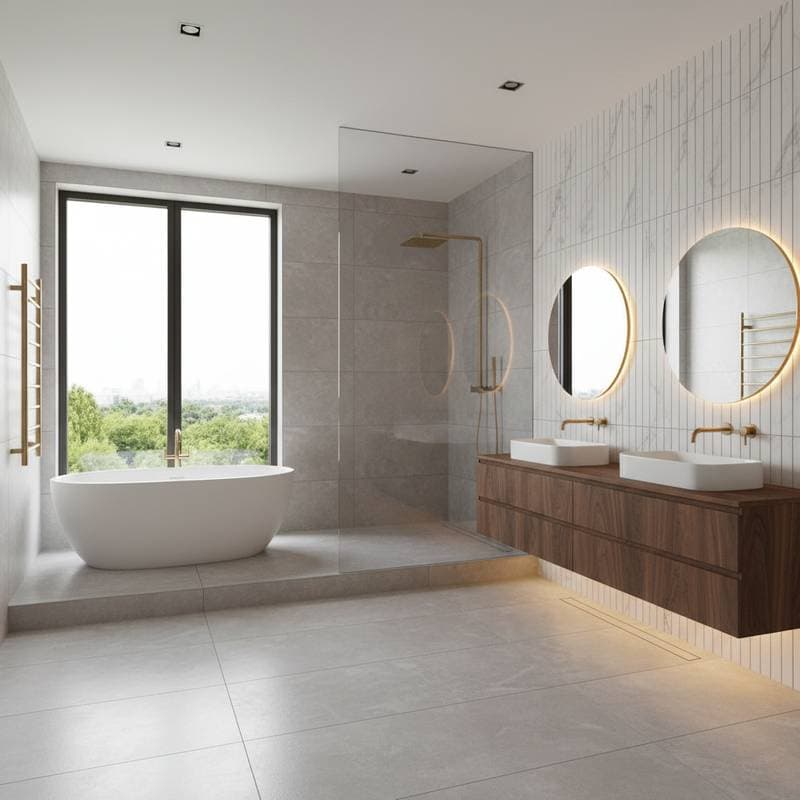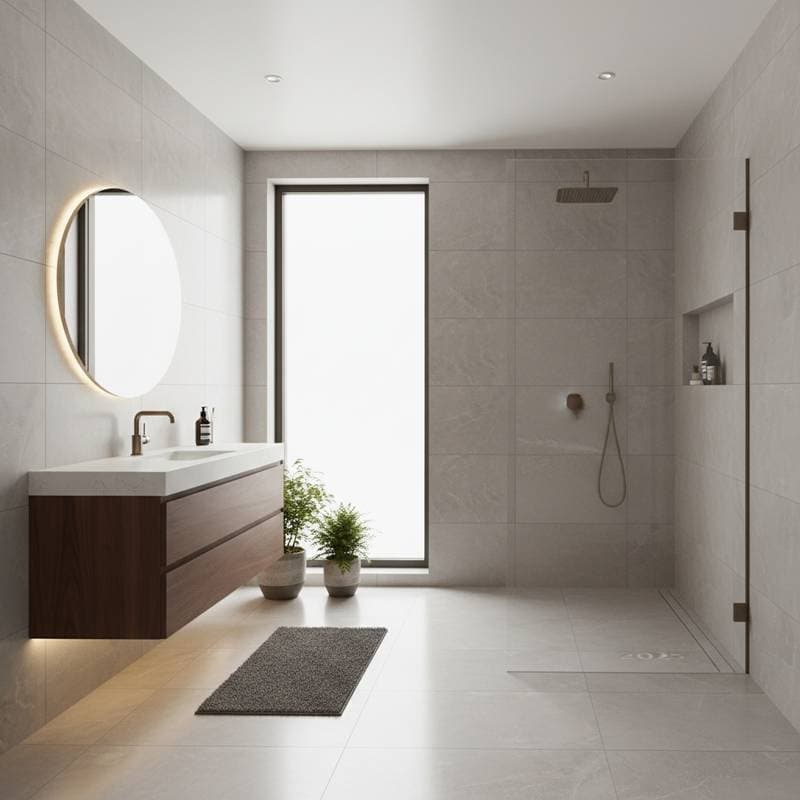How Wet Rooms Can Increase Your Home's Resale Value by 11% in 2025
Wet rooms represent a modern evolution in bathroom design, featuring open, doorless shower areas that blend seamlessly with the rest of the space. These installations eliminate traditional shower enclosures, creating a spa-like atmosphere while maximizing functionality. In 2025, real estate experts predict that homes with wet rooms will command an 11 percent premium on resale value, driven by demand for accessible, low-maintenance, and stylish bathrooms.
This boost stems from broader trends toward aging-in-place features and minimalist aesthetics. Buyers appreciate the barrier-free entry, which enhances safety and perceived spaciousness. For homeowners considering a remodel, understanding the investment pays dividends in both enjoyment and financial return.
Key Benefits of Installing a Wet Room
Wet rooms offer practical advantages beyond aesthetics. The open layout simplifies cleaning, as water flows directly to integrated drains without confined corners collecting grime. This design also supports universal accessibility, making it easier for individuals with mobility challenges to navigate the space.
From a value perspective, the 11 percent uplift reflects market data from recent sales in urban and suburban areas. Properties with updated bathrooms, particularly those incorporating wet rooms, sell faster and at higher prices. The key lies in professional execution to ensure waterproofing integrity and compliance with building codes.
Breaking Down the Costs
Budgeting for a wet room requires accounting for materials, labor, and ancillary expenses. Total costs typically range from $15,000 to $35,000 for a standard installation, depending on size, finishes, and location. Below, explore the main components to set realistic expectations.
1. Materials
Select durable, water-resistant options to ensure longevity. High-quality choices prevent future repairs and maintain the space's appeal.
- Waterproofing membrane: $300 to $800 for sheet or liquid-applied systems covering floors and walls.
- Flooring and wall tiles: $5 to $15 per square foot for porcelain, glass, or natural stone; budget $1,500 to $4,000 for a 60-square-foot area.
- Glass panel or half screen: $500 to $1,800 depending on thickness and installation type.
- Drain and fixtures: $400 to $1,000 for linear or point drains, plus showerheads and valves.
2. Labor
Professional installation guarantees proper slope and sealing, critical for functionality.
- Waterproofing and prep: $2,000 to $4,000 for certified installers.
- Tile setting: $8 to $18 per square foot for porcelain or mosaic surfaces.
- Plumbing: $1,200 to $2,500 for rerouting drains and supply lines.
- Finishing work: $600 to $1,200 for trim, fixtures, and sealing.
3. Size and Access
Scale influences the overall price. A compact 6-by-8-foot bathroom can stay near the lower range, while a large master suite with custom stone flooring can double the cost. Tight spaces or concrete slabs add effort and expense due to additional structural adjustments.
4. Permits and Code
Local regulations ensure safety and quality. Expect permit fees between $150 and $400. Wet rooms often require inspection for slope, drainage capacity, and waterproofing system compliance. Skipping this step risks voiding insurance coverage and incurring fines.
5. Disposal and Add-ons
Account for initial teardown and potential enhancements. Demolition and debris removal usually add $500 to $1,000. Optional upgrades like heated floors ($10 to $15 per square foot) or smart exhaust fans increase comfort but also expand the budget.
DIY Versus Professional Installation
Deciding between handling parts of the project yourself or hiring experts depends on skill level and risk tolerance. While some tasks suit DIY enthusiasts, core elements demand professional oversight to avoid costly mistakes.
Tasks Suitable for DIY
Focus on non-structural work to save on labor without compromising safety.
- Demo and prep: Remove old fixtures, clean the subfloor, and mark plumbing lines.
- Tile layout: Dry-lay tiles to verify slopes and patterns before permanent installation.
- Painting and accessory install: Add hooks, mirrors, and trim for a finished look.
Tasks Requiring Professionals
Certain steps involve specialized knowledge and tools to meet code standards.
- Waterproofing: Engage certified installers, as any imperfection in the membrane leads to leaks damaging underlying structures.
- Drain slope work: Achieve a precise 1/4-inch drop per foot toward the drain; errors redirect water undesirably.
- Electrical and lighting: Install ground fault protection devices and vapor-proof fixtures with a licensed electrician.
- Structural changes: Obtain permits for wall or drain relocations, handled by skilled contractors.
Overall risk for a full DIY approach rates medium to high. A waterproofing failure alone can exceed $5,000 in repairs. Essential tools include a tile saw, laser level, trowels, grout float, and safety gear; renting for a week costs about $250. Prioritize gloves, eye protection, a respirator for dust, waterproof knee pads, and shutting off the main water supply before demolition.
Maintenance for Longevity
Proper upkeep extends the life of a wet room, protecting your investment. With regular attention, these spaces endure for decades, resisting common issues like mold and wear.
Daily and Routine Care
Incorporate simple habits to minimize buildup and damage.
- Wipe walls and floors after each shower to reduce mineral deposits.
- Reseal grout and stone every two to three years.
- Inspect drain covers monthly for hair and debris.
- Operate the exhaust fan for 20 minutes post-use to control humidity and prevent mold.
Addressing Common Problems
Prompt intervention keeps minor issues from escalating.
- Grout cracks: Repair immediately after settling to avoid water infiltration.
- Drain odor: Clean traps and flush with warm water plus a mild cleaner.
- Slippery surfaces: Opt for textured tiles or apply non-slip treatments.
Warranty Considerations
Leverage manufacturer protections for peace of mind.
- Waterproof systems: Provide 10-year coverage when installed by certified professionals.
- Fixtures and drains: Offer five-year backing; retain receipts and installation photos for claims.
Current Design Trends Enhancing Appeal
Incorporating popular elements elevates a wet room's marketability. These features align with buyer preferences for luxury and practicality, contributing to the projected value increase.
- Curbless entry: Facilitates barrier-free access and amplifies the sense of openness.
- Textured tile floors: Ensure traction without relying on loose mats.
- Hidden drains: Integrate seamlessly with surrounding flooring.
- Integrated lighting: Use LED strips in niches for enhanced usability and ambiance.
- Biophilic elements: Incorporate natural stone tones and light wood accents for a serene, spa-inspired retreat.
Such trends now appear in luxury listings and increasingly in midrange properties. A well-designed wet room differentiates your home in listings and during showings.
Regional Considerations and Market Factors
Adaptations based on location optimize performance and value. Climate and buyer demographics influence material choices and layout.
In coastal or high-humidity areas, choose porcelain over natural stone for superior moisture resistance. Colder regions benefit from radiant floor heating, boosting comfort and desirability. Urban dwellers favor compact wet rooms with premium finishes, whereas suburban preferences lean toward expansive designs pairing a wet zone with a freestanding tub.
Supply chain challenges persist for specialty tiles and imported glass. Secure materials early to prevent delays. Local suppliers provide comparable alternatives to high-end imports at 30 percent lower cost.
Planning Your Wet Room Project
Step 1: Define the Scope
Assess whether to convert an entire bathroom or focus on the shower area. Measure precisely and diagram drain positions. Obtain at least three quotes from licensed contractors to compare options.
Step 2: Establish a Budget
Factor in a 10 to 15 percent contingency for unforeseen issues like hidden damage or modifications. Verify tile availability prior to finalizing agreements.
Step 3: Select and Schedule
Prioritize contractors experienced in wet room installations. Review portfolios for waterproofing expertise and code adherence. Aim to complete the project during off-peak seasons to minimize disruptions.
Realizing the Return on Your Investment
A thoughtfully executed wet room not only enhances daily living but also positions your home favorably in a competitive market. The 11 percent resale value increase in 2025 underscores its role as a strategic upgrade. Consult local real estate professionals to tailor the design to your area's trends, ensuring maximum impact.








